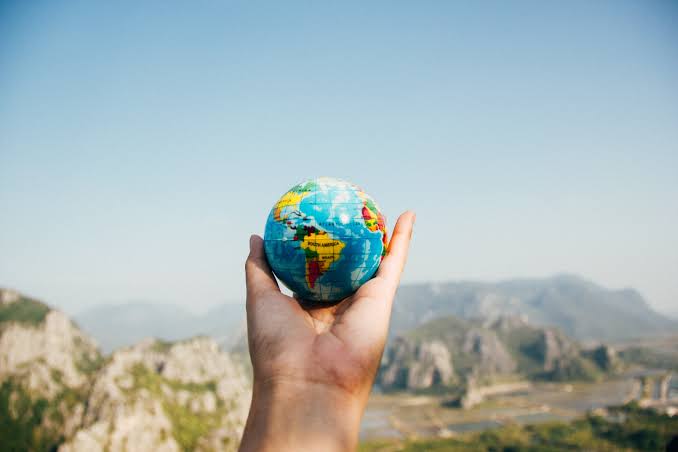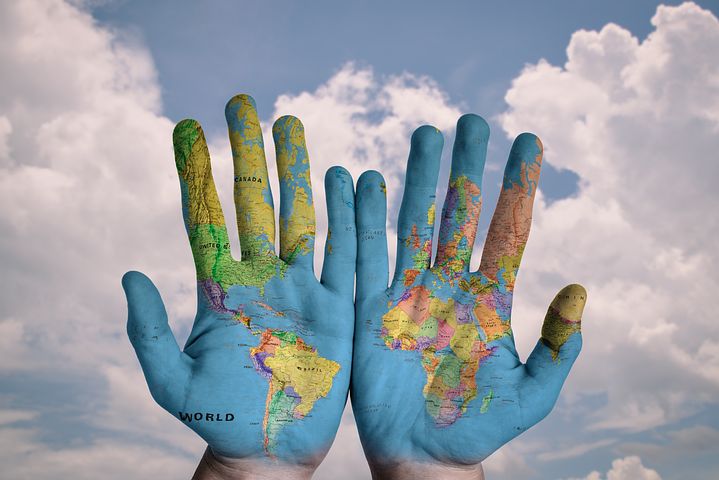Human geography is a captivating field that delves into the study of the relationship between people and their environment. It examines how individuals and societies interact with their surroundings, shaping and being shaped by the physical and cultural landscapes they inhabit. One of the fundamental aspects of human geography is the exploration of places and regions within a global context. This article aims to provide an overview of this intriguing field, highlighting key concepts, sub-disciplines, and case studies that illustrate the dynamic interplay between humans and their geographic surroundings.
Table of contents
Introduction to Human Geography
Human geography is the study of the spatial relationships between people and the environment they inhabit. It seeks to understand how humans interact with and transform their surroundings, as well as the reciprocal influence of the environment on human activities. By examining the distribution of populations, cultural practices, economic systems, political structures, and environmental changes, human geography uncovers the complexities of our interconnected world.
Defining Human Geography
Human geography encompasses a wide range of topics, including population geography, cultural geography, economic geography, political geography, and urban geography. It is an interdisciplinary field that draws on various social sciences, such as sociology, anthropology, economics, and political science, as well as natural sciences, such as ecology and geology.
3 Definitiona of Human Geography by Authors
- “Human geography is the branch of geography that deals with the study of people and their communities, cultures, economies, and interactions with the environment by emphasizing their spatial organization.” (Knox, P., & Marston, S.)
- “Human geography is concerned with the spatial organization of human activities and with people’s relationships with their environments. It examines the ways in which social, economic, and political systems are organized across space.” (Agnew, J.)
- “Human geography is the study of the spatial organization of human activity and of people’s relationships with their environments and with each other.” (Mitchell, D.)
The Importance of Understanding Places and Regions
Places and regions are central to human geography as they provide the context for understanding human activities and their spatial patterns. Places are unique locations with distinctive physical and cultural characteristics, while regions are areas that share common features and are defined by their spatial boundaries. By analyzing places and regions, human geographers can uncover the complexities of social, economic, political, and environmental processes.
Human-Environment Interaction
Human geography emphasizes the dynamic interaction between humans and their environment. It examines how humans adapt to and modify their surroundings, as well as how environmental changes impact human societies. This understanding is crucial for addressing pressing global challenges, such as climate change, sustainable development, and the preservation of natural resources.
Key Concepts in Human Geography
To comprehend the complexities of places and regions within a global context, several key concepts are vital in human geography:
Space and Place
Space refers to the physical dimensions of the Earth, while place is imbued with meanings and experiences associated with specific locations. Human geographers explore how people perceive and attach significance to places, shaping their identities, relationships, and sense of belonging.
Scale and Hierarchy
Scale refers to the levels at which geographic phenomena are studied, ranging from local to global. Human geographers analyze the hierarchical relationships and connections between different scales, understanding how decisions made at one level can have cascading effects on other scales.
Landscape and Culture
Landscape refers to the visible features of an area, shaped by natural and human processes. Cultural geographers examine how cultures and societies imprint meanings onto landscapes, creating cultural landscapes that reflect the values, beliefs, and practices of a particular group.
Identity and Belonging
Human geography explores how individuals and communities construct identities and establish a sense of belonging to places and regions. Identity formation is influenced by factors such as ethnicity, language, religion, and historical narratives, which contribute to the diverse cultural tapestry of our world.
Sub-disciplines of Human Geography
Human geography encompasses various sub-disciplines that focus on specific aspects of human-environment interactions. Some key sub-disciplines include:
Economic Geography
Economic geography examines the spatial patterns of economic activity, including the distribution of industries, trade networks, and global economic systems. It explores topics such as globalization, regional development, and the impact of economic processes on places and regions.
1. Globalization and its Impact on Places and Regions
Globalization has reshaped economic landscapes, with the emergence of global supply chains, transnational corporations, and interconnected financial systems. Economic geographers analyze the uneven distribution of wealth, power, and resources resulting from globalization, as well as its impacts on labor markets and local economies.
2. Spatial Patterns of Economic Activity
Economic geography investigates the spatial organization of economic activities, such as industrial clusters, agglomeration economies, and urban-rural disparities. It examines how factors like transportation networks, labor availability, and natural resources influence the location of industries and economic development.
Political Geography
Political geography examines the relationship between politics and geography, focusing on the spatial aspects of political systems, territoriality, and international relations. It analyzes how political boundaries, geopolitics, and power dynamics shape places and regions.
1. Territoriality and Sovereignty
Political geographers study the concept of territoriality and how it defines political spaces. They analyze the establishment and maintenance of territorial boundaries, the role of states in asserting sovereignty, and conflicts arising from territorial disputes.
2. Geopolitics and International Relations
Geopolitics explores the intersection of geography and international relations, examining how geographical factors influence political decision-making, resource distribution, and geopolitical rivalries. It investigates topics such as geopolitical alliances, the geopolitics of energy resources, and the impact of globalization on state sovereignty.
Urban Geography
Urban geography focuses on cities as dynamic spaces of social, economic, and cultural exchange. It explores the spatial organization, growth, and challenges of urban areas, shedding light on urbanization processes and their impacts.
1. Cities as Places of Social, Economic, and Cultural Exchange
Urban geographers analyze the diverse social interactions, economic activities, and cultural diversity found in cities. They investigate the formation of urban identities, the role of urban spaces in fostering creativity and innovation, and the social inequalities within urban areas.
2. Urbanization and its Challenges
With rapid urbanization occurring worldwide, urban geography examines the social, economic, and environmental consequences of urban growth. It explores issues such as urban sprawl, housing affordability, transportation infrastructure, and the provision of services in urban areas.
Cultural Geography
Cultural geography explores the relationship between culture and geography, focusing on the spatial distribution of cultural practices, identities, and landscapes. It investigates how cultural values and beliefs shape places, regions, and human interactions.
1. Language, Religion, and Culture
Cultural geographers study the spatial patterns of languages, religions, and cultural practices, analyzing how they shape the social fabric of places and regions. They examine topics such as cultural diffusion, the preservation of indigenous cultures, and the impacts of globalization on cultural diversity.
2. Cultural Landscapes and Identity Formation
Cultural geography investigates how cultural meanings are inscribed onto landscapes, creating cultural landscapes that reflect human values and practices. It explores the significance of landscapes in identity formation, heritage preservation, and the construction of collective memory.
Environmental Geography
Environmental geography examines the interaction between humans and the natural environment, focusing on environmental processes, hazards, and sustainability. It investigates the impact of human activities on ecosystems and explores strategies for environmental conservation and sustainable development.
1. Natural Hazards and Vulnerability
Environmental geographers study natural hazards such as earthquakes, hurricanes, and floods, analyzing their spatial distribution, causes, and impacts on human populations. They investigate the vulnerability of communities to environmental risks and explore strategies for disaster mitigation and resilience.
2. Conservation and Sustainability
Environmental geography addresses the challenges of resource management, biodiversity conservation, and sustainable development. It explores topics such as climate change, deforestation, water resources, and the ecological impacts of human activities.

Case Studies: Places and Regions in a Global Context
To illustrate the complexities of places and regions within a global context, let’s explore a few case studies:
Migration and Refugee Crisis in Europe
The migration and refugee crisis in Europe highlights the challenges faced by both migrants and host countries. Human geographers analyze the spatial patterns of migration, the factors driving forced displacement, and the socio-economic impacts on receiving regions.
Megacities in Asia: The Urbanization Boom
The rapid urbanization and growth of megacities in Asia, such as Tokyo, Delhi, and Shanghai, present unique urban challenges. Human geographers investigate the spatial dynamics of urban growth, social inequalities, environmental sustainability, and the impacts of global economic integration on these cities.
Amazon Rainforest: Deforestation and Conservation Efforts
The Amazon rainforest serves as a critical case study for examining environmental geography and conservation efforts. Human geographers analyze deforestation patterns, the impacts on biodiversity and indigenous communities, and the role of international agreements and local initiatives in preserving this vital ecosystem.
Cultural Landscapes of Indigenous Communities in North America
The cultural landscapes shaped by indigenous communities in North America provide insights into the intersection of culture and geography. Human geographers study the spatial organization of indigenous territories, the preservation of cultural heritage, and the ongoing struggles for land rights and self-determination.
The Belt and Road Initiative: China’s Influence on Global Trade
China’s Belt and Road Initiative (BRI) is a vast infrastructure and economic development project with global implications. Human geographers analyze the spatial dimensions of the BRI, its impacts on trade patterns, geopolitics, and the challenges and opportunities it presents to participating countries.
Challenges and Future Directions
Human geography faces several challenges and evolving dynamics as our world continues to change. Some key areas for future exploration include:
Climate Change and Environmental Disruptions
The impacts of climate change, including rising sea levels, extreme weather events, and ecological disruptions, pose significant challenges for human geography. Future research will focus on understanding the socio-economic consequences, human adaptations, and strategies for mitigating climate change effects.
Technological Advancements and Their Impact on Human Geography
Rapid technological advancements, such as artificial intelligence, big data, and geospatial technologies, are transforming the field of human geography. Research will delve into the implications of these technologies on spatial analysis, data collection, and the understanding of human-environment interactions.
Social and Political Transformations in a Globalized World
The ongoing transformations in social and political realms, driven by globalization, migration, and geopolitical shifts, require human geographers to investigate the changing dynamics of power, identity, and governance. The examination of social movements, cultural transformations, and new forms of political organization will be critical.
Conclusion
Human geography provides a lens through which we can understand the complexities of places and regions in a global context. By exploring the spatial relationships between humans and their environment, we gain insights into the socio-cultural, economic, political, and environmental processes that shape our world. As our planet continues to evolve, human geography will play a crucial role in addressing the challenges and opportunities that lie ahead.
Bibliography
- Agnew, J. (2013). Globalization and Sovereignty. Rowman & Littlefield.
- Castree, N., Kitchin, R., & Rogers, A. (Eds.). (2013). A Dictionary of Human Geography. Oxford University Press.
- Fouberg, E., Murphy, A., & de Blij, H. J. (2015). Human Geography: People, Place, and Culture. Wiley.
- Knox, P. L., & Marston, S. A. (2021). Human Geography: Places and Regions in Global Context. Pearson.
- Mitchell, D. (2016). Cultural Geography: A Critical Introduction. Wiley.
- Roberts, S., & Johnson, N. (Eds.). (2017). Politics and Power in the Multinational Corporation: The Role of Institutions, Interests, and Identities. Cambridge University Press.
- Smith, D. M. (2014). Economic Geography: A Contemporary Introduction. Wiley.
- Soja, E. W. (2015). My Los Angeles: From Urban Restructuring to Regional Urbanization. University of California Press.
- Unwin, T. (2011). ICT4D: Information and Communication Technology for Development. Cambridge University Press.



 For all latest articles, follow on Google News
For all latest articles, follow on Google News